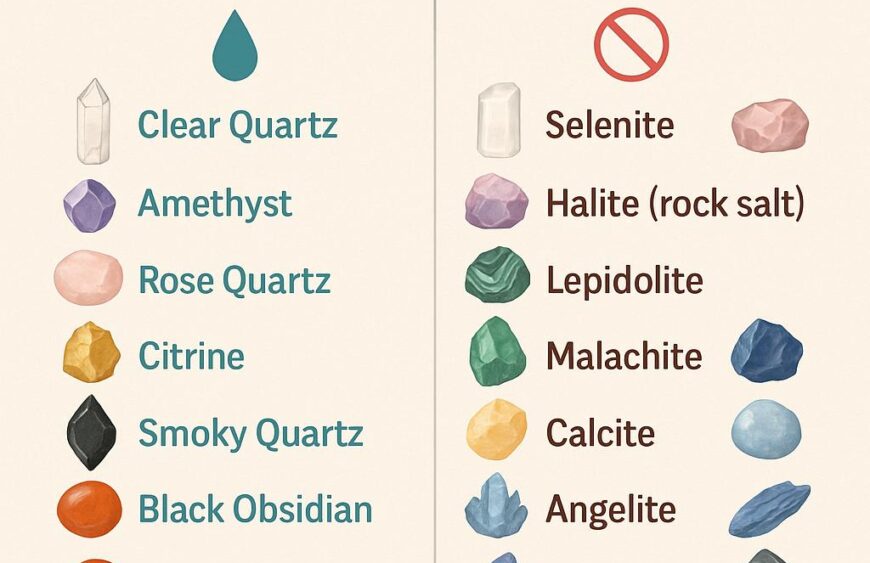🧊 Crystals that dissolve or get damaged in water:
- Selenite – dissolves easily
- Halite (rock salt) – literally salt, dissolves in water
- Lepidolite – soft and flaky; water can degrade it
- Malachite – can release toxic copper when wet
- Azurite – unstable and can break down in water
- Calcite (all forms: orange, green, etc.) – very soft and can erode
- Angelite – absorbs water and turns into gypsum
- Celestite – fragile, can crack or break
- Kyanite – especially black kyanite; can flake apart
- Fluorite – may fade or crack
- Chrysocolla – often porous and delicate
⚠ Crystals that may rust or tarnish:
- Hematite – contains iron; will rust
- Pyrite (Fool’s Gold) – also iron-based; can tarnish or crumble
🧠 Rule of Thumb:
If the crystal ends in “-ite” (e.g., Selenite, Malachite, Fluorite), it’s often not water-safe. Also, if it’s soft (Mohs hardness under 5), porous, or metallic, keep it dry.
⸻
✅ Water-Safe Crystals (for comparison):
These are usually safe for short water contact (but always dry them properly):
- Clear Quartz
- Amethyst
- Rose Quartz
- Citrine
- Smoky Quartz
- Black Obsidian (volcanic glass, fairly stable)
- Carnelian (some sources say yes, others no – use with caution)


